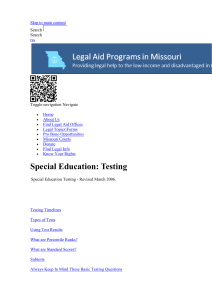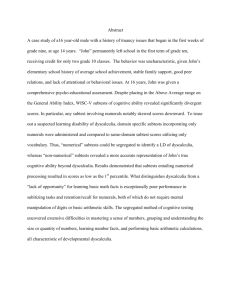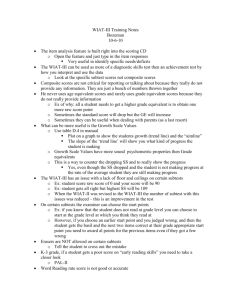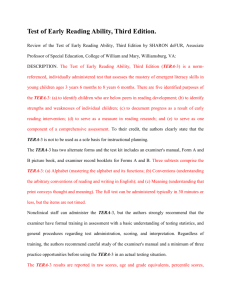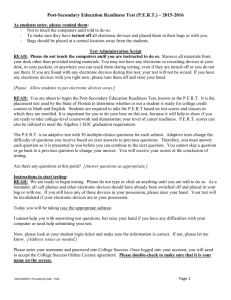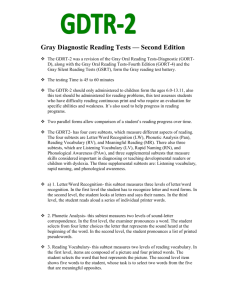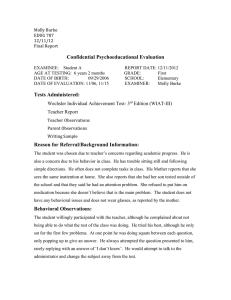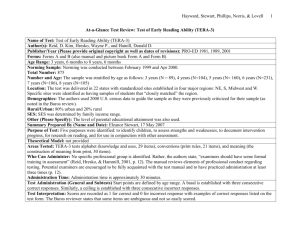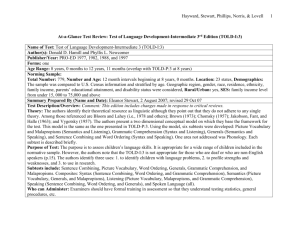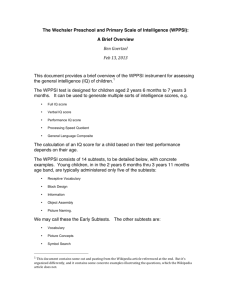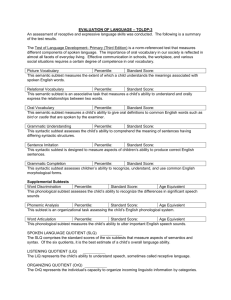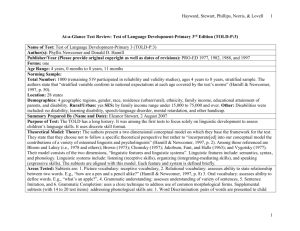Test of Early Reading Ability-3 (TERA-3)
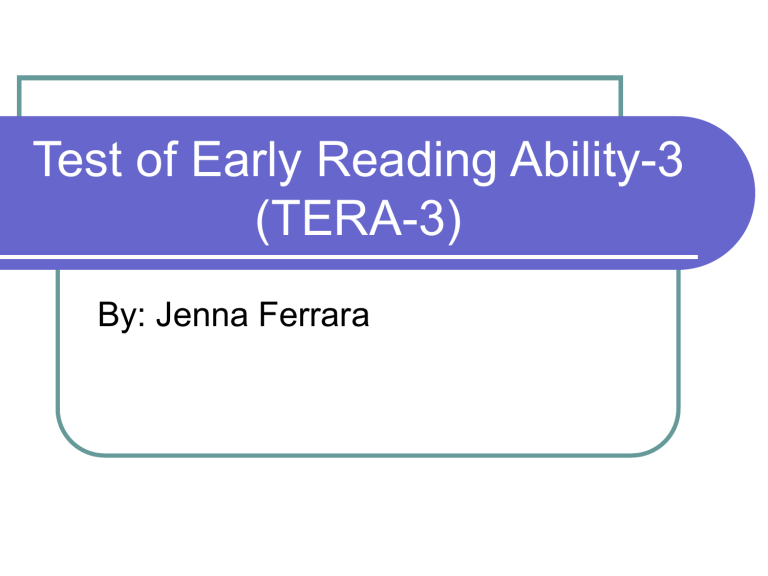
Test of Early Reading Ability-3
(TERA-3)
By: Jenna Ferrara
What does it measure and why?
There are five identified purposes of the
TERA-3
(a) to identify children who are significantly below their peers in reading development and thus may be candidates for early reading intervention;
(b) to identify strengths and weaknesses of individual children;
(c) to document progress as a result of early reading intervention programs;
(d) to serve as a measure in studying reading development in young children;
(e) to serve as one component of a comprehensive assessment.
What does it measure and why?
Three subtests comprise the TERA-3:
(a) Alphabet – (29 items) This test measures children’s knowledge of the alphabet and sound-letter correspondence.
Subtests also measure student’s abilities to determine initial and final sounds, the number of sounds and syllables in words, and awareness of letters printed in different fonts.
(b) Conventions – (21 items) This test measures children’s’ concepts about print. Subtests include how to handle a book, where to begin reading, print conventions, and knowledge of punctuation, capitalization, and spelling.
(c) Meaning – (30 items) This test measures children’s ability to comprehend printed material. This subtest includes comprehending words, sentences, and paragraphs.
Paraphrasing, sentence construction, and vocabulary are also measured.
Type of Test
The Test of Early Reading Ability, Third
Edition (TERA-3) is an individually administered, formal, norm-referenced test that assesses the mastery of emergent literacy skills in young children.
Test Demands
Each question of the assessment is on its own page in the test flip book. At the top of each page, it tells the administrator what to say.
Students answers are then marked in the answer booklet and given a score of a 1 (correct) or 0
(incorrect).
The authors address emergent literacy skills in alphabet (knowledge of and use of letters), conventions (directionality, parts of a book, where to begin reading, when to turn the page, etc.), and meaning (make predictions, interpret stories, retell stories, etc.) simultaneously, rather than sequentially, as this progression mirrors the reading development process.
Test Administration
The intended age for this assessment is for a child between 3 years 6 months and 8 years 6 months.
Age-appropriate entry points are given for each subtest. When students get 3 questions in a row wrong, you can discontinue that subtest.
The authors state that children under the age of 5 may require a break after each 10 minutes of testing.
The full test can be administered typically in 30 minutes or less, but the items are not timed.
You should practice prior to administering so you are familiar with the questions and flow of the assessment.
The authors recommend at least 3 practice sessions.
Scores Yielded
Results are reported in raw scores, subtest standard scores, a composite quotient, age and grade equivalents, and percentile scores.
A reading quotient is calculated by summing scores from the three subtests. You then use a table to convert the sum to a reading quotient, which can also be viewed as a percentile.
The authors indicate that they reluctantly reinstated the calculation of age and grade equivalent scores into the third version of this assessment.
Strengths/Points of Interest
The TERA-3 can be used with children who vary widely in the style of English they speak.
It is easy to administer and score.
The examiner’s manual is clear.
Items from everyday life are incorporated (McDonald’s logo, Reese’s pieces candy, etc.), which also serves as student motivation.
The authors provide a literature review that documents the importance of emergent literacy skills in alphabet, conventions, and meaning along with the importance of assessing reading in young children.
Criticism/Limitations
The TERA-3 is not to be used as a sole basis for instructional planning.
The assessment cannot be used with students with whom English is not their first language.
Classroom Implications
The assessment provides you with information about a child’s school ability influenced by reading ability.
Helps you break down the reading process and see exactly where reading difficulties are coming from
(alphabet, meaning, or conventions).
I can see this assessment as being very beneficial in the primary grades.
This assessment should be given in a one on one environment, so getting the time to do that may be a challenge depending on where you teach and the resources allotted.
